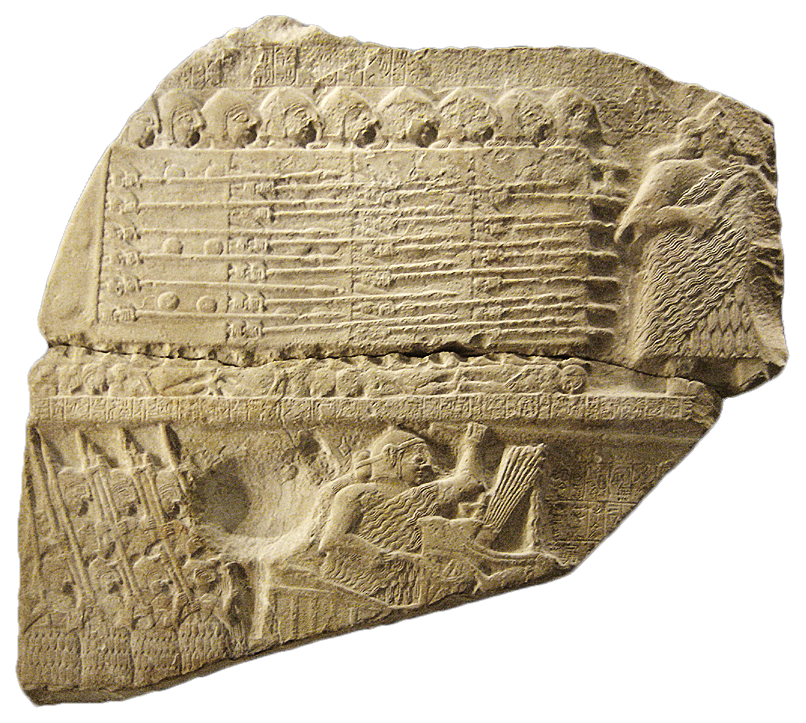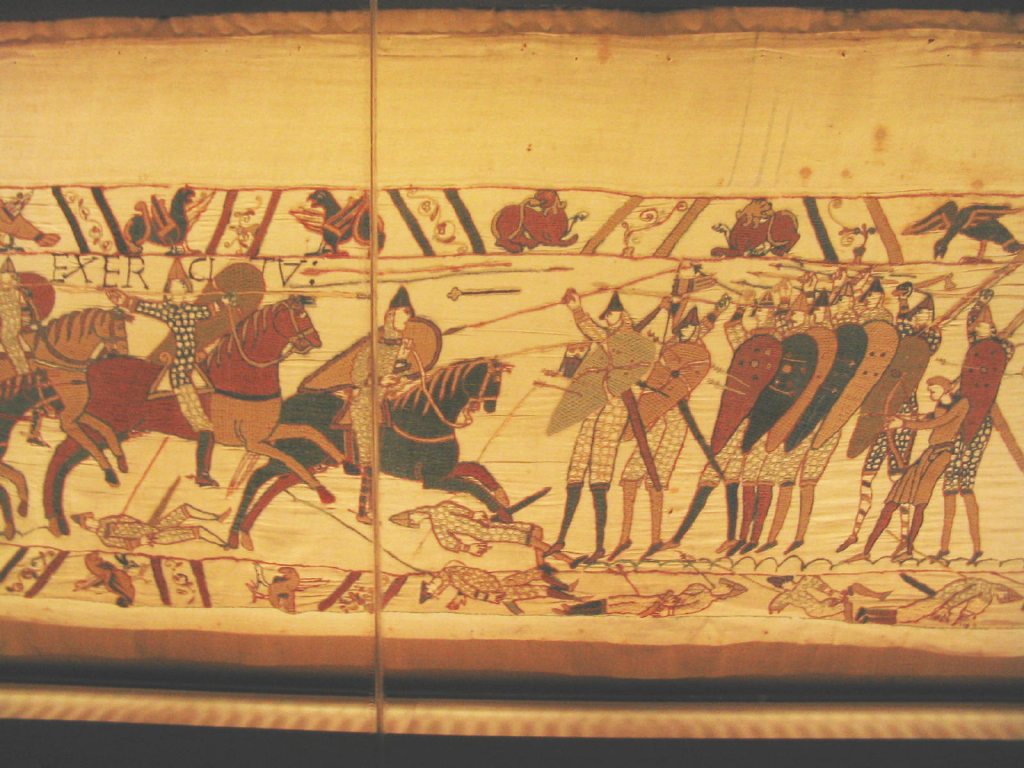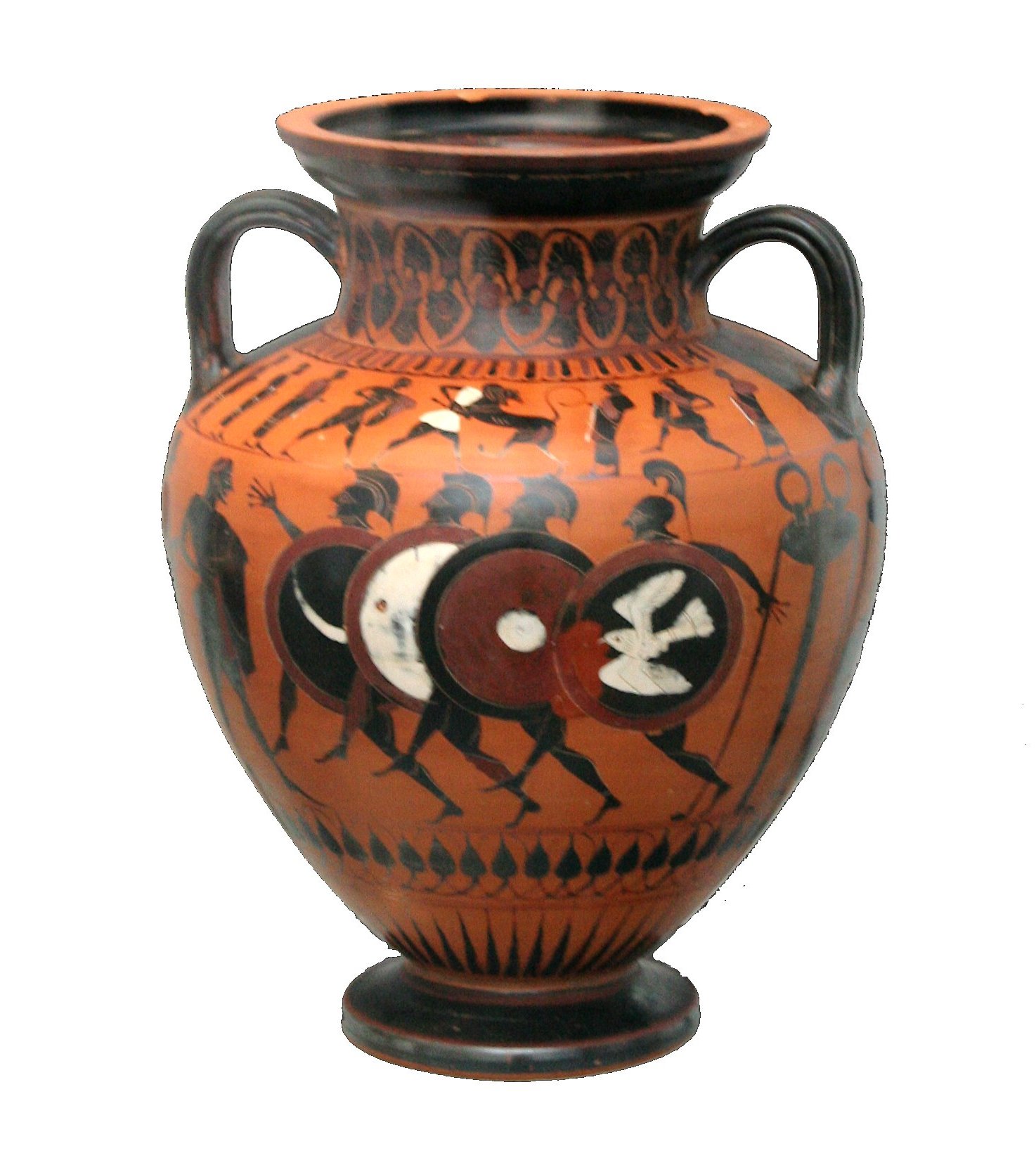|
Close Order Formation
A close order formation is a military tactical formation in which soldiers are close together and regularly arranged for the tactical concentration of force. It was used by heavy infantry in ancient warfare, as the basis for shield wall and phalanx tactics, to multiply their effective weight of arms by their weight of numbers. In the Late Middle Ages, Swiss pikemen and German Landsknechts used close order formations that were similar to ancient phalanxes. Around the American Civil War (1861–1865), such organizations of soldiers became uncommon since improvements in firearms and artillery had made any such dense formation increasingly hazardous and less effective. The technological concentration of increased firepower to fewer soldiers had rendered the close order formation obsolete by the end of the 19th century. Modern infantry now use skirmish order, which is effectively the opposite of close order. Antiquity Images from the Sumerian kingdom from the 3rd millennium BC c ... [...More Info...] [...Related Items...] OR: [Wikipedia] [Google] [Baidu] |
Stele Of Vultures Detail 01-transparent
A stele ( ),Anglicized plural steles ( ); Greek plural stelai ( ), from Greek , ''stēlē''. The Greek plural is written , ''stēlai'', but this is only rarely encountered in English. or occasionally stela (plural ''stelas'' or ''stelæ''), when derived from Latin, is a stone or wooden slab, generally taller than it is wide, erected in the ancient world as a monument. The surface of the stele often has text, ornamentation, or both. These may be inscribed, carved in relief, or painted. Stelae were created for many reasons. Grave stelae were used for funerary or commemorative purposes. Stelae as slabs of stone would also be used as ancient Greek and Roman government notices or as boundary markers to mark borders or property lines. Stelae were occasionally erected as memorials to battles. For example, along with other memorials, there are more than half-a-dozen steles erected on the battlefield of Waterloo at the locations of notable actions by participants in battle. A traditio ... [...More Info...] [...Related Items...] OR: [Wikipedia] [Google] [Baidu] |
Spear
A spear is a pole weapon consisting of a shaft, usually of wood, with a pointed head. The head may be simply the sharpened end of the shaft itself, as is the case with fire hardened spears, or it may be made of a more durable material fastened to the shaft, such as bone, flint, obsidian, iron, steel, or bronze. The most common design for hunting or combat spears since ancient times has incorporated a metal spearhead shaped like a triangle, lozenge, or leaf. The heads of fishing spears usually feature barbs or serrated edges. The word '' spear'' comes from the Old English '' spere'', from the Proto-Germanic ''speri'', from a Proto-Indo-European root ''*sper-'' "spear, pole". Spears can be divided into two broad categories: those designed for thrusting as a melee weapon and those designed for throwing as a ranged weapon (usually referred to as javelins or darts). The spear has been used throughout human history both as a hunting and fishing tool and as a weapon. Along ... [...More Info...] [...Related Items...] OR: [Wikipedia] [Google] [Baidu] |
Battle Of Morat
The Battle of Morat (also known as the Battle of Murten) was a battle in the Burgundian Wars (1474–77) that was fought on 22 June 1476 between Charles the Bold, the Duke of Burgundy, and a Swiss Confederate army at Morat/Murten, about 30 kilometres from Bern. The result was a crushing defeat for the Burgundians at the hands of the Swiss. Background Stung by his defeat by the Swiss Confederation ). Swiss law does not designate a ''capital'' as such, but the federal parliament and government are installed in Bern, while other federal institutions, such as the federal courts, are in other cities (Bellinzona, Lausanne, Luzern, Neuchâtel ... at Battle of Grandson, Grandson in March 1476, Charles the Bold, Duke of Burgundy, reorganised his tangled but otherwise mainly intact army at Lausanne. By the end of May he once again felt ready to march against the Confederates to recover his territories and fortifications in the Pays de Vaud, then march on and attack the city of Bern ... [...More Info...] [...Related Items...] OR: [Wikipedia] [Google] [Baidu] |
Zürich
Zürich () is the list of cities in Switzerland, largest city in Switzerland and the capital of the canton of Zürich. It is located in north-central Switzerland, at the northwestern tip of Lake Zürich. As of January 2020, the municipality has 434,335 inhabitants, the Urban agglomeration, urban area 1.315 million (2009), and the Zürich metropolitan area 1.83 million (2011). Zürich is a hub for railways, roads, and air traffic. Both Zurich Airport and Zürich Hauptbahnhof, Zürich's main railway station are the largest and busiest in the country. Permanently settled for over 2,000 years, Zürich was founded by the Roman Empire, Romans, who called it '. However, early settlements have been found dating back more than 6,400 years (although this only indicates human presence in the area and not the presence of a town that early). During the Middle Ages, Zürich gained the independent and privileged status of imperial immediacy and, in 1519, became a primary centre of the Protestant ... [...More Info...] [...Related Items...] OR: [Wikipedia] [Google] [Baidu] |
Shieldwall
A shield wall ( or in Old English, in Old Norse) is a military formation that was common in ancient and medieval warfare. There were many slight variations of this formation, but the common factor was soldiers standing shoulder to shoulder and holding their shields so that they would abut or overlap. Each soldier thus benefited from the protection of the shields of his neighbors and his own. History Ancient history The formation was known to be used by many ancient armies including the Persian Sparabara, Greek phalanx, and the early Roman army, but its origin and spread is unknown. It may have developed independently more than once. Although little is recorded about their military tactics, the Stele of the Vultures depicts Sumerian soldiers in a shield wall formation during the third millennium BC. By the seventh century BC, shield walls in ancient Greece are well-documented. The soldiers in the shield wall formations were called hoplites, so named for their equip ... [...More Info...] [...Related Items...] OR: [Wikipedia] [Google] [Baidu] |
Dornach 1499
: ''Dornach is also a quarter of the French city of Mulhouse and the Scots name for Dornoch in the Scottish Highlands, and Dòrnach is the Gaelic name for Dornoch in the Scottish Highlands.'' Dornach (Swiss German: ''Dornech'') is a municipality in the district of Dorneck in the canton of Solothurn in Switzerland. History Dornach is first mentioned in 1223 as ''de Tornacho''. In 1307 it was mentioned as ''zu Dornach''. It has been settled since at least 1223 when a local lay priest was known as Johannes de Tornacho (thought to mean "from the estate of Turnus"). The site was the location of the decisive 1499 Battle of Dornach, which ended the Swabian War and effectively ensured the independence of the Old Swiss Confederacy from the Holy Roman Empire. The battle is memorialized in a 1949 relief wall. Today Dornach is famous for the Goetheanum and is home to the international headquarters of the Anthroposophical movement founded by Rudolf Steiner. Geography Dornach has an ... [...More Info...] [...Related Items...] OR: [Wikipedia] [Google] [Baidu] |
Gladius
''Gladius'' () is a Latin word meaning "sword" (of any type), but in its narrow sense it refers to the sword of ancient Roman foot soldiers. Early ancient Roman swords were similar to those of the Greeks, called '' xiphe'' (plural; singular ''xiphos''). From the 3rd century BC, however, the soldiers of the Roman Republic adopted a sword based on the celtic sword used by the Celtiberians in Hispania late into the Punic Wars, known in Latin as the ''gladius hispaniensis'', meaning "Hispanic-type sword". New variants of the gladius, such as the "Mainz gladius" and the "Pompeii gladius", were used from the first century AD and during the early centuries of the Roman Empire; in the third century AD the gladius was replaced by the " spatha". A fully equipped Roman legionary after the reforms of Gaius Marius was armed with a shield (''scutum''), one or two javelins ('' pila''), a sword (''gladius''), often a dagger ('' pugio''), and, perhaps in the later empire period, darts (''plumbat ... [...More Info...] [...Related Items...] OR: [Wikipedia] [Google] [Baidu] |
Pilum
The ''pilum'' (; plural ''pila'') was a javelin commonly used by the Roman army in ancient times. It was generally about long overall, consisting of an iron shank about in diameter and long with a pyramidal head, attached to a wooden shaft by either a socket or a flat tang. Design A ''pilum'' had a total weight of between , with the versions produced during the earlier Republic being slightly heavier than those produced in the later Empire. The weapon had a hard pyramidal tip, but the shank was sometimes made of softer iron. The softness could cause the shank to bend after impact and so render the weapon useless to the enemy. Some believe that the ''pilum'' was not meant to bend after impact but that bending came from improper handling/removal of the weapon when it became stuck in an object. If a ''pilum'' struck a shield it might embed itself, the bending of the shank would force the enemy to discard his shield as unusable without removing the ''pilum'', which would be t ... [...More Info...] [...Related Items...] OR: [Wikipedia] [Google] [Baidu] |
Roman Legions
The Roman legion ( la, legiō, ) was the largest military unit of the Roman army, composed of 5,200 infantry and 300 equites (cavalry) in the period of the Roman Republic (509 BC–27 BC) and of 5,600 infantry and 200 auxilia in the period of the Roman Empire (27 BC – AD 476). Size The size of a typical legion varied throughout the history of ancient Rome, with complements ranging from 4,200 legionaries and 300 equites (drawn from the wealthier classes – in early Rome all troops provided their own equipment) in the Republican period of Rome (the infantry were split into 10 cohorts each of four maniples of 120 legionaries), to 4,800 legionaries (in 10 cohorts of 6 centuries of 80 legionaries) during Caesar's age, to 5,280 men plus 120 auxiliaries in the Imperial period (split into 10 cohorts, nine of 480 men each, with the first cohort being double-strength at 960 men). It should be noted the above numbers are typical field strengths while "paper strength" was sli ... [...More Info...] [...Related Items...] OR: [Wikipedia] [Google] [Baidu] |
Sarissa
The sarisa or sarissa ( el, σάρισα) was a long spear or pike about in length. It was introduced by Philip II of Macedon and was used in his Macedonian phalanxes as a replacement for the earlier dory, which was considerably shorter. These longer spears improved the strength of the phalanx by extending the rows of overlapping weapons projecting towards the enemy, and the word remained in use throughout the Byzantine years to sometimes describe the long spears of their own infantry. Composition and utility The sarissa, made of tough and resilient cornel wood, was very heavy for a spear, weighing approximately .Markle 324 It had a sharp iron head shaped like a leaf and a bronze butt-spike, which could be anchored in the ground to stop charges by the enemy. The spike was sharpened well enough to pierce an enemy shield. The bronze material of the butt-spike prevented it from rusting. The spike also served to balance out the spear, making it easier for soldiers to wield, and co ... [...More Info...] [...Related Items...] OR: [Wikipedia] [Google] [Baidu] |
Aspis
An aspis ( grc, ἀσπίς, plural ''aspides'', ), or porpax shield, sometimes mistakenly referred to as a hoplon ( el, ὅπλον) (a term actually referring to the whole equipment of a hoplite), was the heavy wooden shield used by the infantry in various periods of ancient Greece. Construction An aspis was deeply dished and made primarily of wood. Some had a thin sheet of bronze on the outer face, often just around the rim. In some periods, the convention was to decorate the shield; in others, it was usually left plain. The aspis measured at least in diameter and weighed about , and it was about thick. This large shield was made possible partly by its shape, which allowed it to be supported comfortably on the shoulder. The revolutionary part of the shield was, in fact, the grip. Known as an grip, it placed the handle at the edge of the shield and was supported by a leather or bronze fastening for the forearm at the center, known as the porpax. This allowed hoplites m ... [...More Info...] [...Related Items...] OR: [Wikipedia] [Google] [Baidu] |






-Segunda_Edad_del_Hierro.jpg)


